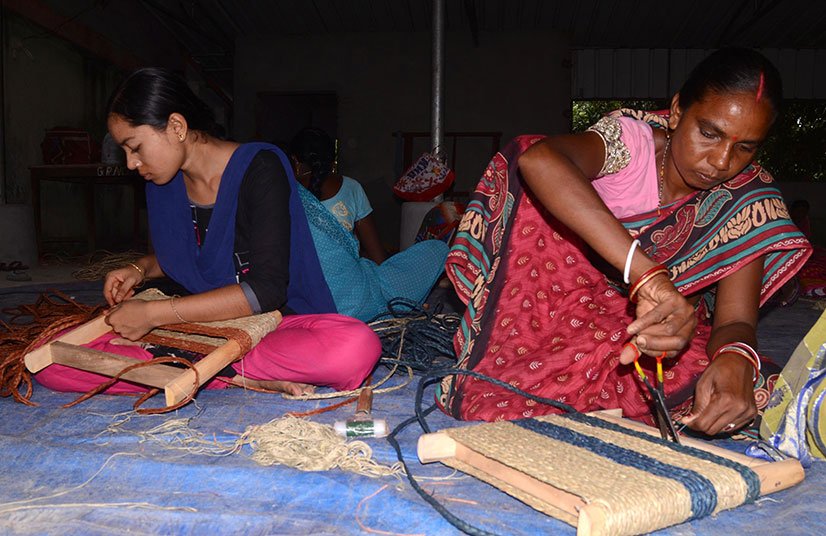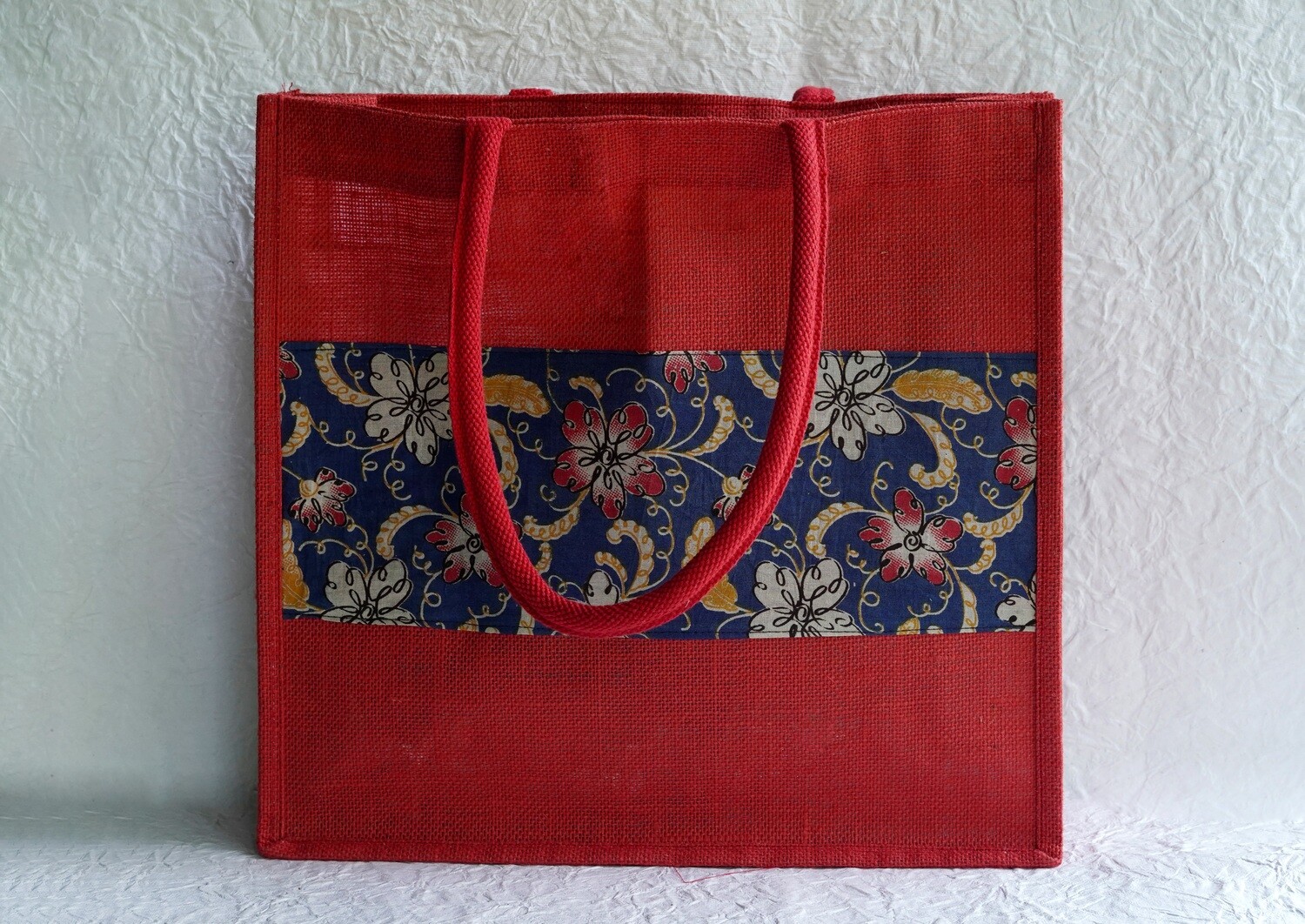Sabai Grass
SABAI GRASS is one of the fine natural fibres that has the potential to be coloured or dyed. The local individuals are dependent on the collection of a variety of leaves and grasses. These leaves and grasses are the main source of income for the local individuals for a period of time. The only product made from Sabai grass was ropes. Now it is used to make baskets, cots, coasters, decorative boxes, wall hanging and furniture.
Kalamkari Red Jute Bag
Bring a splash of color and tradition into your daily routine with our Kalamkari Red Jute Bag. This eco-friendly bag combines the natural beauty of jute with the rich, vibrant art of Kalamkari, making it a perfect blend of cultural heritage and modern functionality.
- Eco-friendly Material: Made from 100% natural jute, a biodegradable and sustainable material that is both strong and environmentally conscious.
- Kalamkari Print: Features intricate, Kalamkari designs that showcase traditional Indian craftsmanship, giving each bag a unique and artistic flair.
- Spacious & Practical: With ample space to carry your essentials.
- Durable & Lightweight: The jute construction ensures long-lasting durability while remaining light and easy to carry.
- Comfortable Straps: Designed with sturdy and comfortable handles for easy carrying on your shoulder or by hand.
- Versatile Design: Ideal for casual outings, shopping trips, or as an eco-friendly gift for friends and family.
- Bold & Beautiful: The vibrant red color, paired with the intricate Kalamkari patterns, adds a touch of elegance and artistry to your wardrobe.
Choose the Kalamkari Red Jute Bag for a sustainable, stylish accessory that highlights traditional artistry while serving your everyday needs.
Specification :
Material: Jute
Size ( CM ) :40*42*14
*Colour May Vary
Making Process
The process of Sabai Grass is done in the Easter and Central part of India. Popularly known as Sabai is one of the old techniques of Indian culture.
The steps followed in Sabai Grass process is given below:
- The grass is cut from the Peepul Tree.
- The bundle of grass is placed in the sun for 3 to 4 days for drying.
- Once the grass is dried, the bundle of grass is cut in layers.
- Then weaving is done.
- Now finally painting and stitching is done as per the product requirement.

Beneficiary

Mirdolo mahato
Mirdolo mahato is from a family of farmers. She was trained in the Sabai making process and now independently can manufacture Sabai products. She is married and has three children. Her husband also helps her in the process. This interest in making the Natural Fibre product has made her one of the bread winners of the family. She earns around Rs. 300 per day

